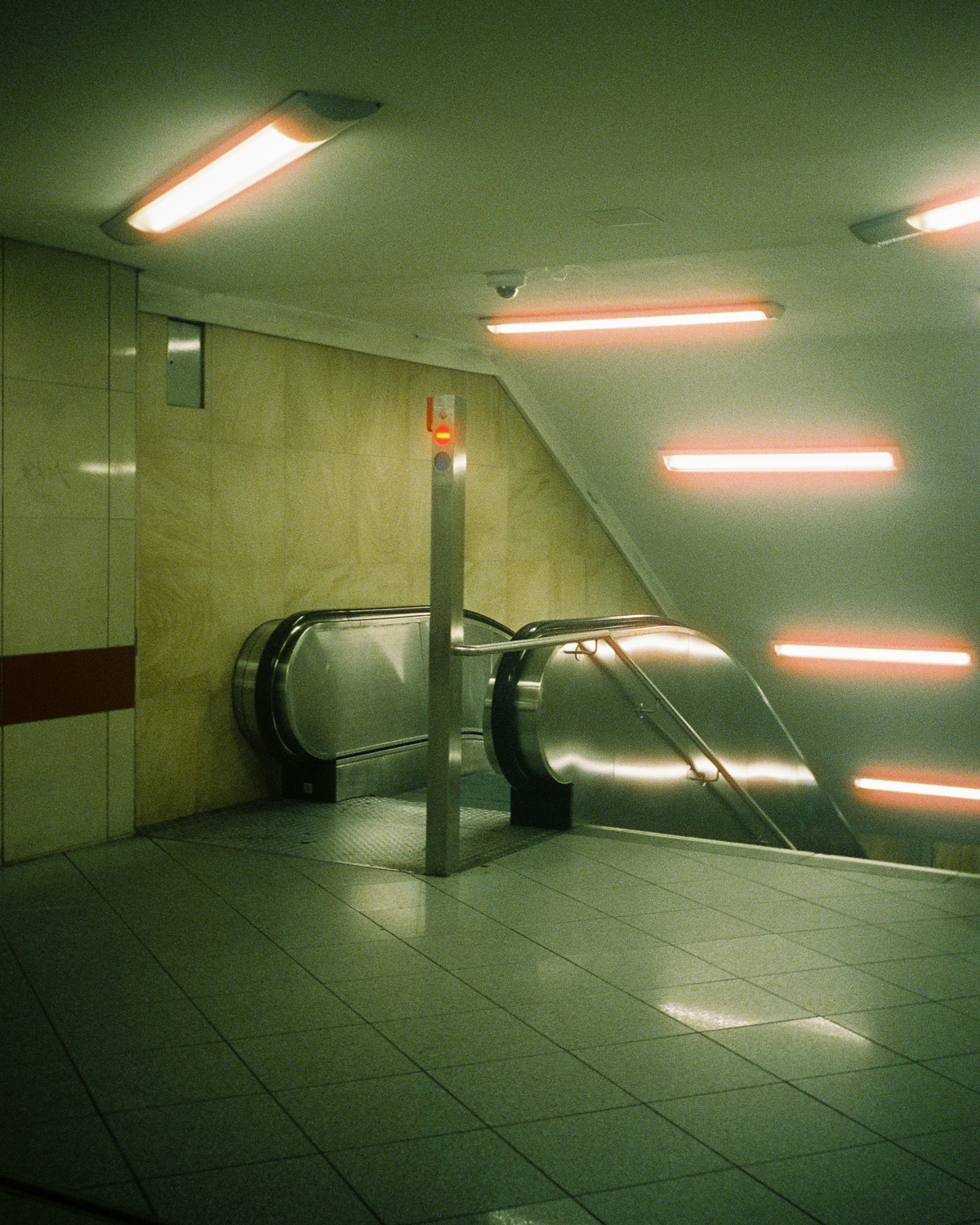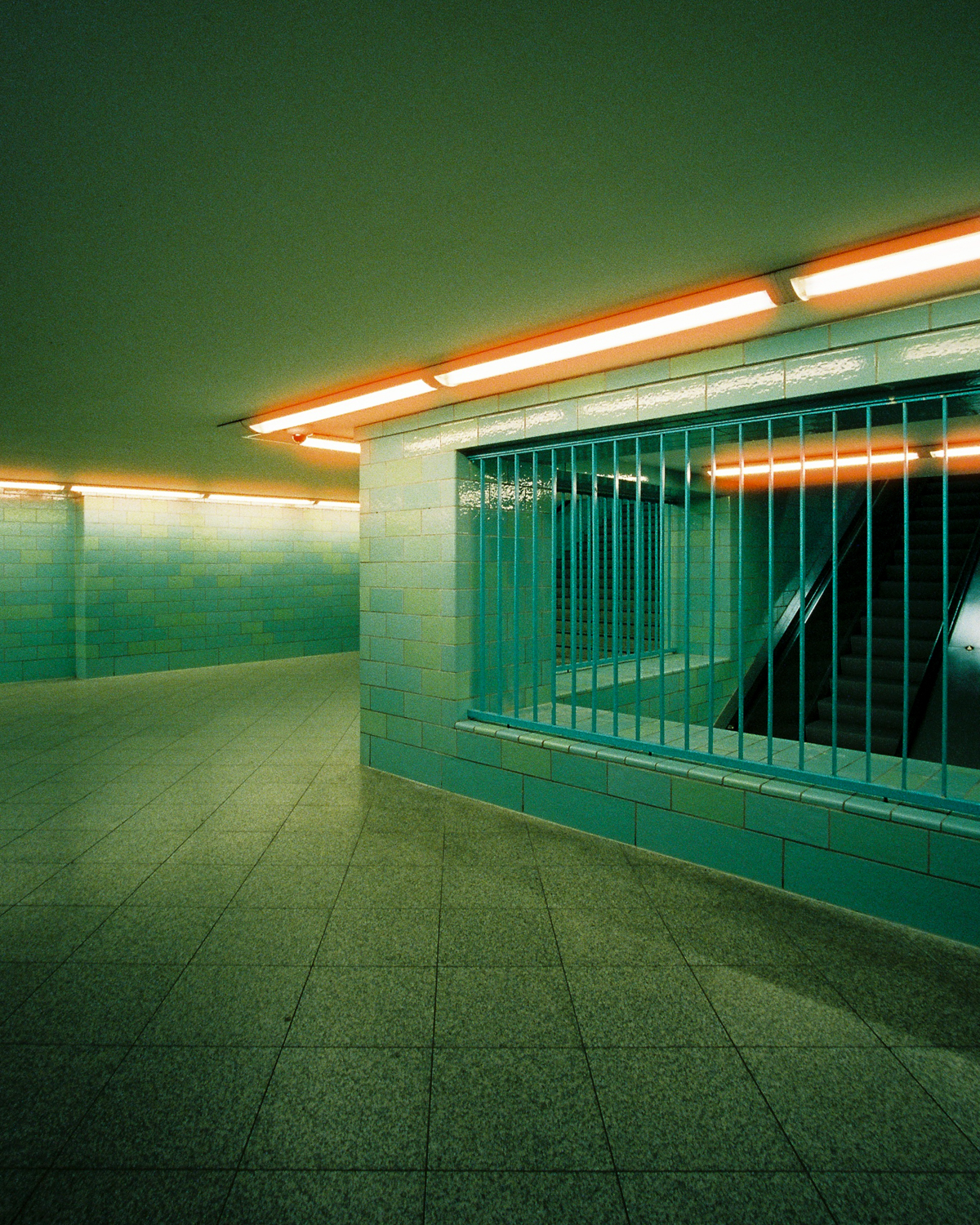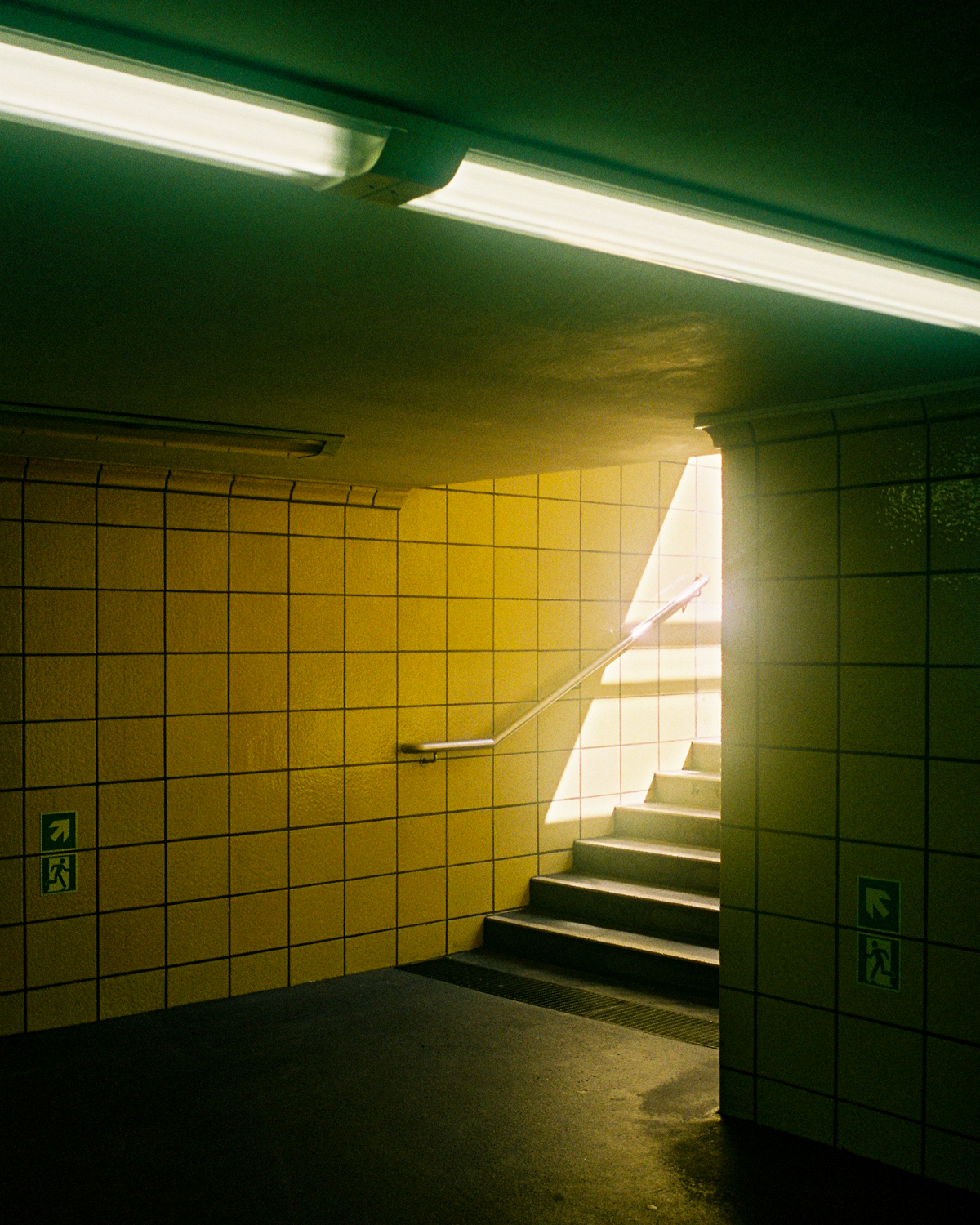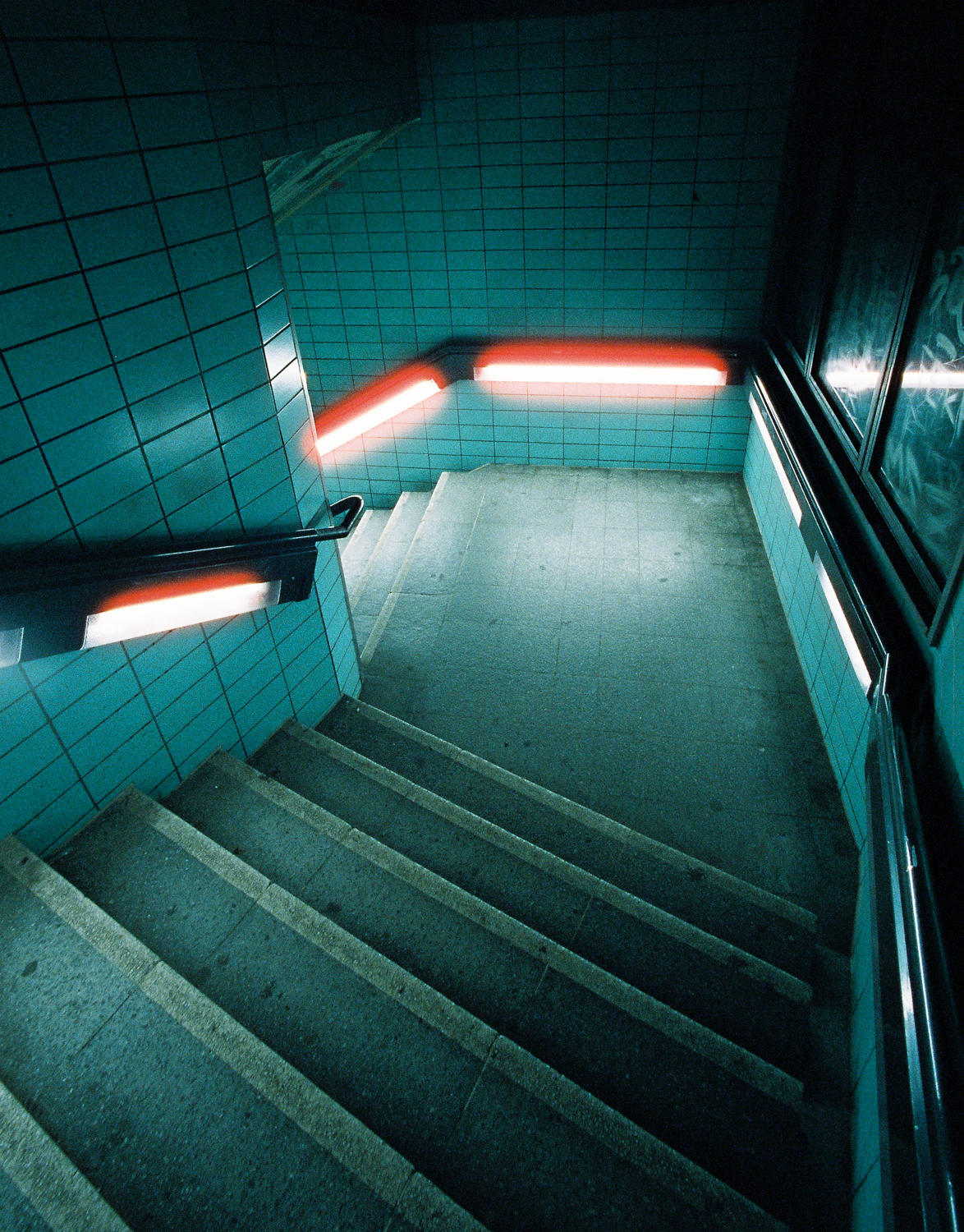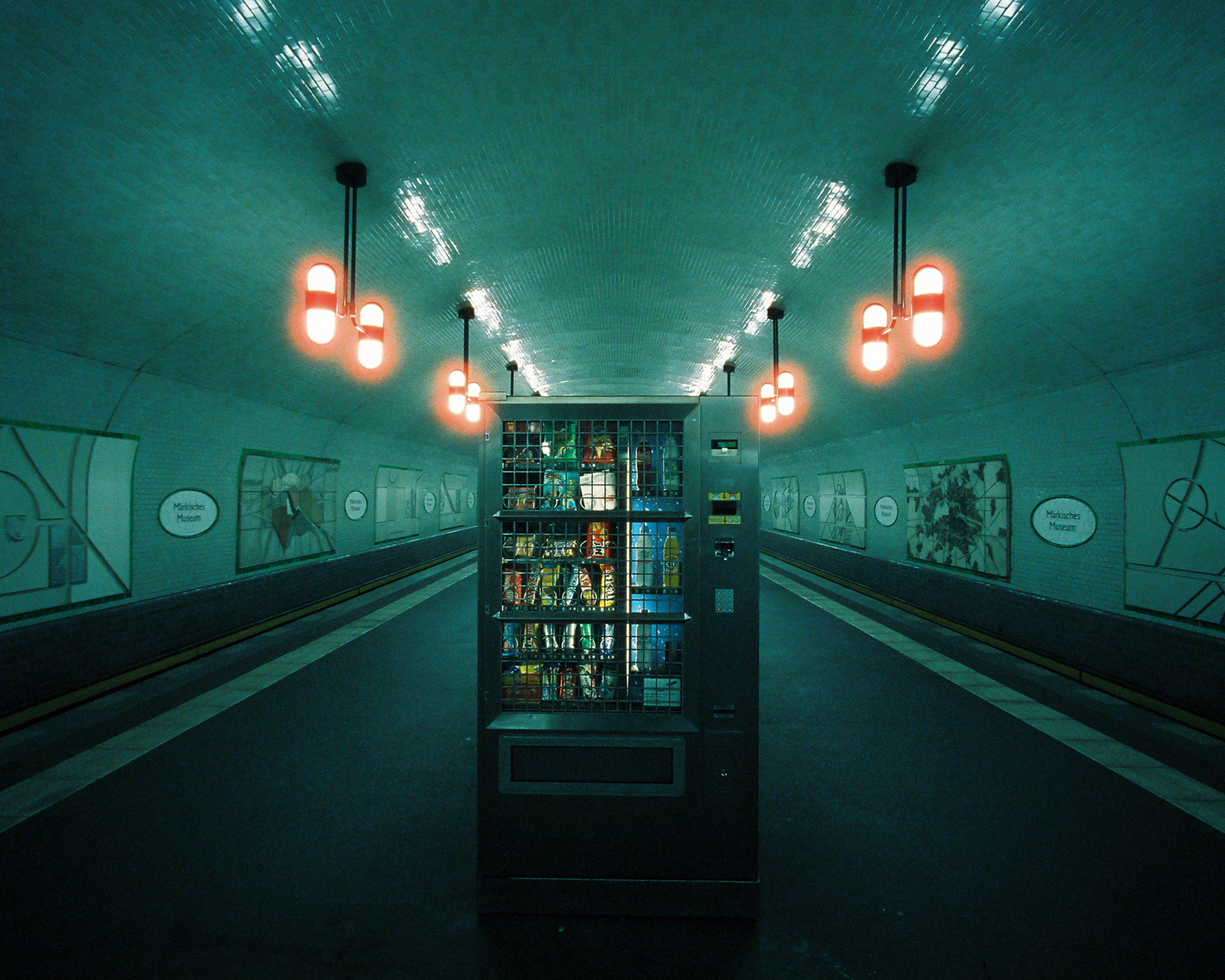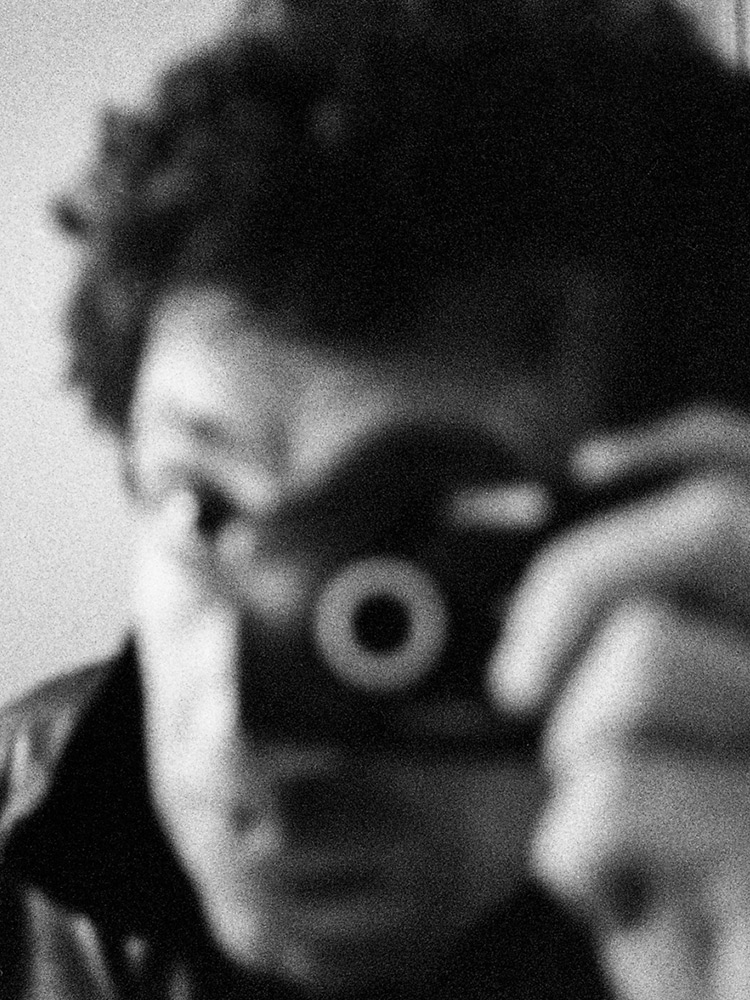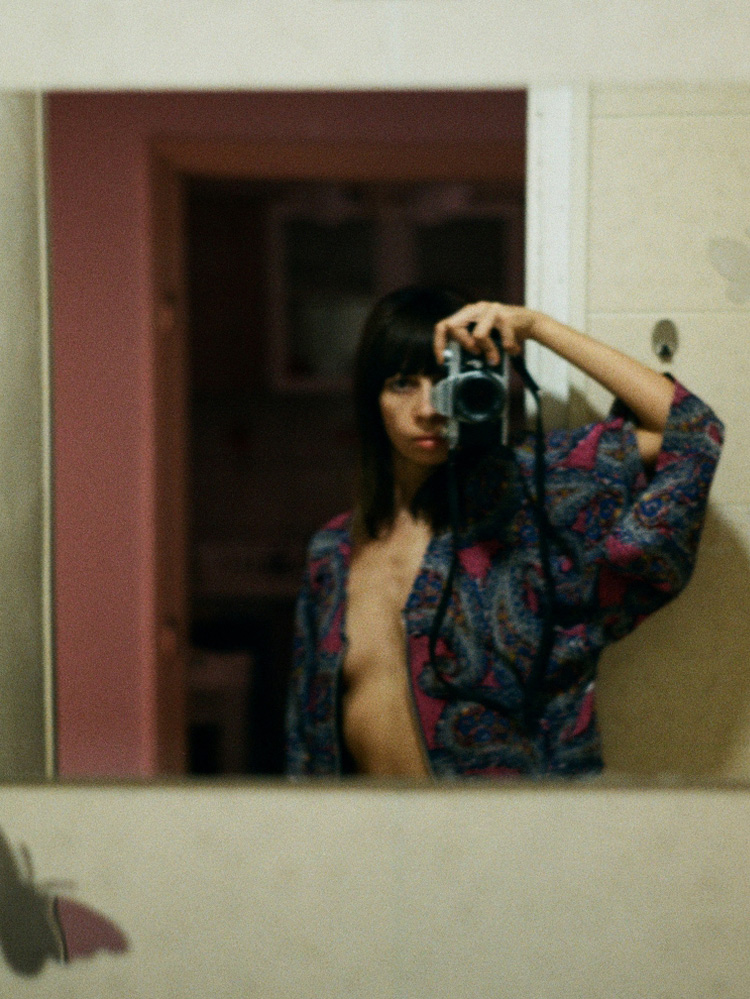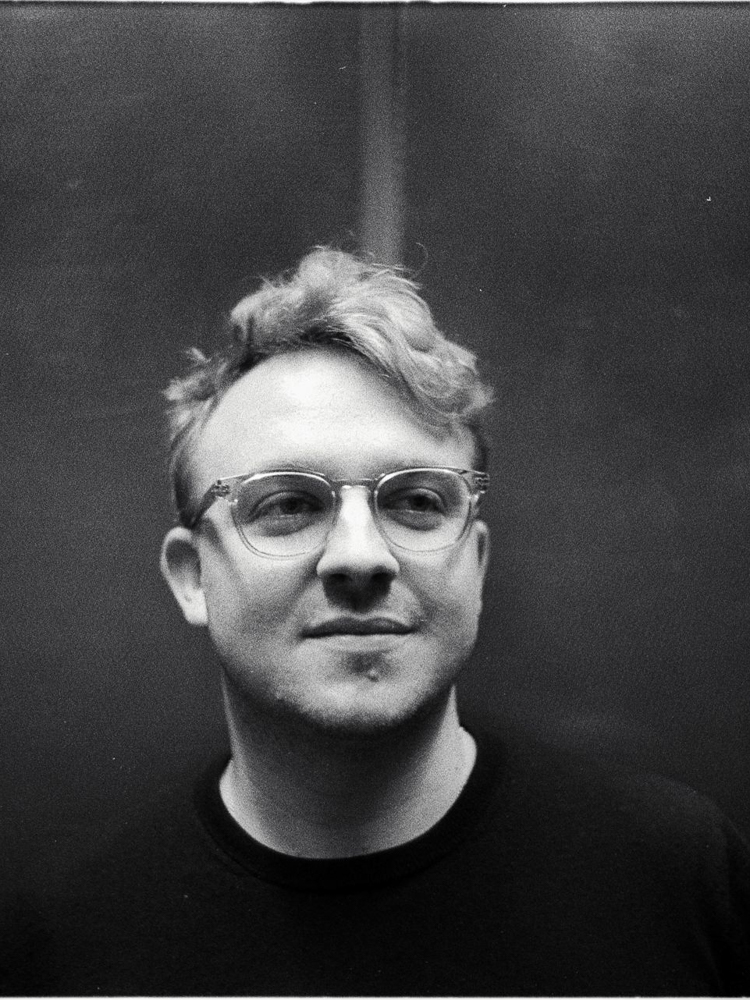
In conversation with
Anton Hangschlitt
Berlin, Germany
Hi Anton, please introduce yourself.
My name is Anton, I live in my hometown Berlin and I mainly photograph urban spaces in Berlin. Photography has always fascinated me a lot, but I never found a real approach to it. Although I occasionally took digital photos, I was never satisfied with the results and found the subsequent editing rather annoying. During my studies I met some people who introduced me to the fascination of analog photography. This sparked my interest and I bought my first analog camera about four years ago. Since then, photography has not let me go.
What does analog photography mean to you? What excites / fascinates you about it?
Analog photography opened the door to photography for me in the first place. Because of the certain look that each film inherently brings, I had an easier way to get results that I was fundamentally satisfied with. It has since evolved a bit, but the gratitude for what film does on its own is still there. Plus, it feels like Christmas every time the scans come in from the lab and you see if it turned out at all, and if so, what the images end up looking like. Waiting for the results is both a curse and a blessing. On the one hand, I’d love to see the photos right away; on the other hand, it’s great to get some distance in time from the work.
In your opinion, what are the advantages and disadvantages of analogue photography?
Besides the obvious advantages from a purely photographic point of view, such as the colors, grain and vividness, the mechanical side of the cameras fascinates me a lot. I see it as an advantage to be able to try all kinds of old cameras with film. During the Corona period, I went to this “rabbit hole” and tried many different cameras. The nice thing is that the cameras don’t lose their value and you can pretty much trade through buying and selling until you find what really suits you.
One drawback I’ve noticed, especially over the past year during various trips, is flying with film. I have often found that there is a lack of understanding that film above ISO 800 should not be put through scanners. I often had to fight there.
Do you concentrate on a certain topic in your work?
My photos are more in the architectural field. I try to put urban spaces, which actually everyone knows, new in scene. I have decided to 99% to do without people in the picture. This gives the images a more surreal character. In the image design then try to influence the eye of the viewer through conscious framing and the use of leading lines and shapes. The variety of colors in Berlin’s architecture also plays a big role in my work. In general, I try to evoke a feeling that is comfortable and restless at the same time.
Are there (analogue) photographers who have influenced your aesthetic and approach?
I actually find my biggest inspiration in art and architecture. Edward Hopper’s aesthetic is something I often have in mind when I go out to photograph. Equally influential for my photography is the Bauhaus school, especially the work of Mies van der Rohe, Kandinsky, Klee and Breuer.
Do you have certain cameras and films that you prefer to work with?
I am very lucky to be able to call a Leica M6 my own. It is a dream to take pictures with this camera. Since I travel without a tripod and move around a lot, its low, unobtrusive profile and small lenses make it perfect for me, plus it’s just a beautiful object to use. As a lens I usually use a 35mm f/1.4 from Voigtländer and on occasion a 15mm f/4.5 also from Voigtländer. As a second camera I always have a point and shoot with me. At the moment this is the Rollei Preto Micron, which can be converted to a 24mm point and shoot with a little hack.
Because my photo subjects are often rather dark, I almost exclusively go for ISO 800 film. My go-to is still Cinestill 800T, but I’m trying to move away from the very restrictive look bit by bit. Lomography Color Negative 800 has been an attractive alternative for me so far, and I’m gradually exploring it. Through a small cooperation with Lomography, I recently tried Lomography Redscale, which I liked quite a bit despite the very strong look.
Speaking of films: What does your workflow look like?
When it comes to development and digitization, I entrust my films to the photo lab “aperture film lab” in Berlin-Charlottenburg. The care with which my films are processed there and the results leave nothing to be desired for me. I don’t do much more with the scans myself except light tonal value corrections, cropping to 5:4 and straightening if needed.
What advice would you have for other photographers who are reading this interview?
Do not feel pressured. Not every photo will end up perfect and that’s okay. Being unhappy with your own work is natural, but you should enjoy the photos you’re proud of.
If you publish your work on Instagram: curse or blessing?
Both. Instagram has made a lot of things possible for me and I’m very grateful for that. Without a certain reach on Instagram, I probably wouldn’t have gotten the opportunity to do my first solo exhibition together with Cinestill or sell out my first zine. On the other hand, you’re always looking for validation through like numbers, etc. In my opinion, that can’t be prevented and is also kind of natural. Unfortunately, Instagram has lost sight of its core lately due to the focus on reels and forces you to follow along in order to stay “relevant”. That’s a real shame.
Which 3 photo books can you recommend / should you definitely own?
“JAL 76 88” (Greg Girard), “Intermission II” (Sascha Weidner) and the second issue of my zine “WHERE WE ARE”, which will be released in summer 2023. 😉
Thank you so much for your time!
Favorites
Leica M6, Rollei Prego Micron
Cinestill 800T, Lomography Redfscale XR, Lomography Color Negative 800
Color
